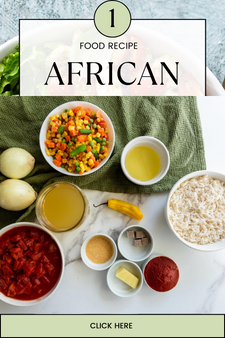Rice and beans is a popular and cheap combination for a meal in different cultures. Ghanaian waakye is the country’s version of this combination. This humble dish, which is eaten any time of the day is cooked with red sorghum leaf sheath, known as “waakye leaves”, which gives it a burgundy (reddish-brown) colour. In this post, I share a recipe for quick and easy Waakye, by using pressure cooker to speed the process of cooking the beans.
This makes it easier to prepare this dish spontaneously, rather than soaking the beans for many hours before cooking.
This Ghanaian rice and beans dish, which pronounced as “wa-chee” is one of the most popular street food in the country. It is sold by street side vendors, wrapped in banana leaves and served with multiple of the the following sides; lamb stew, spaghetti (talia), avocado, shito (fish sauce), kelewele (fried plantain), fried fish, garri fotor, vegetable salad, egg, meat or fish.
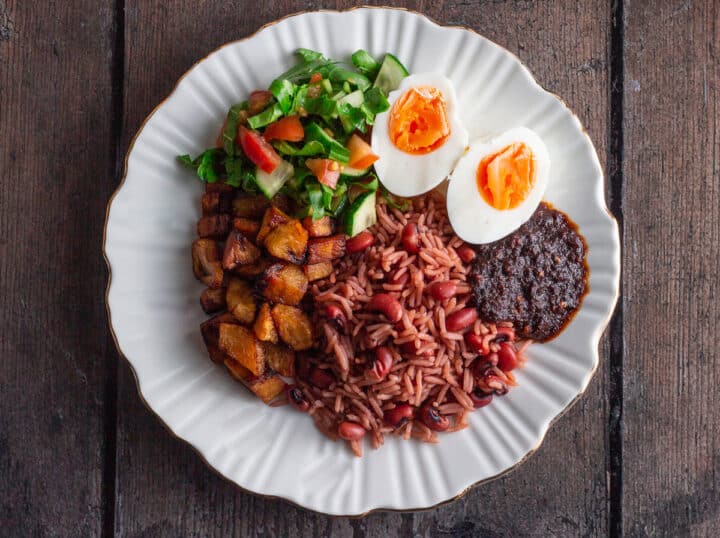
Waakye makes the perfect “fully loaded plate” of food. It can be a complete meal because of the different accompaniments. It is also popular in other West African countries, but just called different names. On the streets of Lagos in Nigeria, it is called “wanke”, while the Togolese call it “ayimolou”.
HOW TO MAKE WAAKYE
Here are the ingredients you need...

- Rice
- Black eye beans
- Waakye leaves
- Salt
A few notes about the ingredients...
- Waakye Leaves: This leaf sheath of West African sorghum bicolor variety is the star of the this recipe. It gives Ghanaian wakye its distinctive reddish-brown colour; it is known as "poporo oka" baba in Yoruba language, and "adako" in Togo. The leaves basically acts as food colorant in this dish, with the rice and beans taking on its leached colour. It is also rich in antixoidants and some essential nutrients. The quantity of waakye leaves used determines how deep the colour of the dish is.
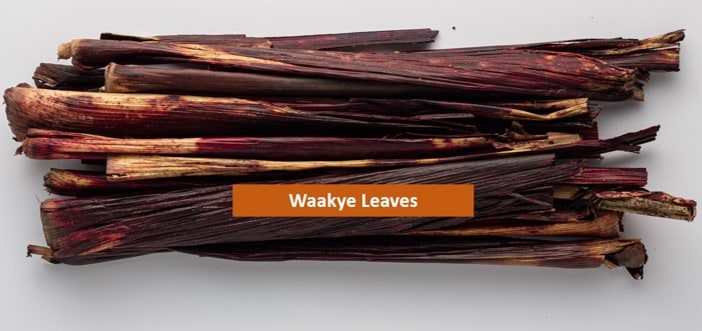
- Beans: Black eye bean is traditionally used for waakye recipe and the colour change after cooking from white to deep red is dramatic. However, you can use any beans which is available.
- Rice: Ghanaians use jasmine rice traditionally, but you can also use any non-stick rice as long as you know the cooking time so it doesn’t turn to mush from overcooking. The ratio of rice to beans depends on personal preference. I prefer to 2:1, while others prefer 1:1. Think about whether you want more beans or rice in the dish and decide your preferred ratio.
- Baking soda: I did not use this ingredient, but a lot of waakye recipe call for baking soda or kaun as an optional ingredient. Kaun, also called kanwa and akaun in West Africa is lake salt and a form of sodium bicarbonate used in cooking. It is used interchangeably with baking soda (also sodium bicarbonate) as a tenderizer in this Ghana rice and beans recipe. It helps the beans to soften more quickly, reducing the cooking time. I don’t like to use it because it also strips some of the nutrients in food.
HOW TO MAKE IT
Pick stones and grits from the beans.
Wash the beans and the waakye leaves. Add into the pressure cooker.
Pour in water up to the minimum level on the pot.
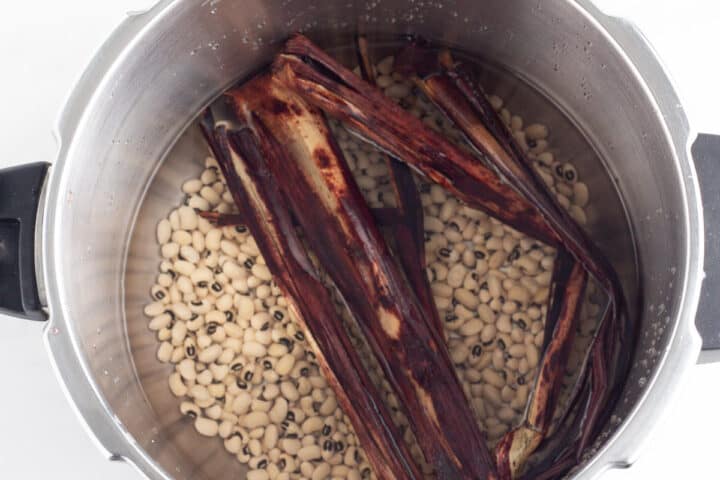
Close the valve of the pressure cooker and leave until it reaches full pressure (when it starts to whistle). This should take no more than 15 mins.
Once it reaches full pressure, reduce the heat and leave for additional 10 mins to cook the beans.
Remove from heat and allow to cool down naturally to depressurize. This should take around 20 mins. You can speed this up by running the top of the pot under a cold water tap for about 3 mins. Please note that I am referring to stove top pressure cooker here and not electric pressure cooker.
Once the pot is adequately cooled. Unlock the lid and check the beans, you want it to be tender already with a little bite so it can be cooked with the rice.

Pour the beans with the cooking liquid and the waakye leaves into another pot. Wash the rice and pour into the pot too.
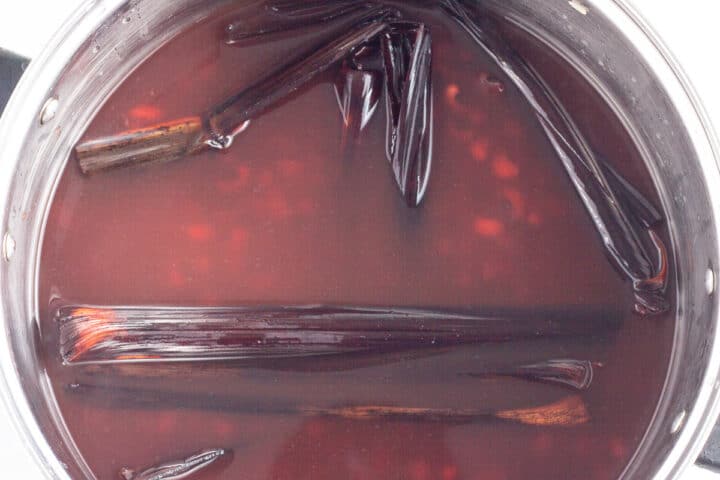
Add more water if needed so there is enough to cook the rice. Add some salt and cover the pot.
Allow the rice to cook. The time for this depends on the type of rice used. I always use golden/sella basmati rice as it holds up texture during cooking. Check your pack instructions if you are no sure.

Take out the waakye leaves and serve with your favourite side.
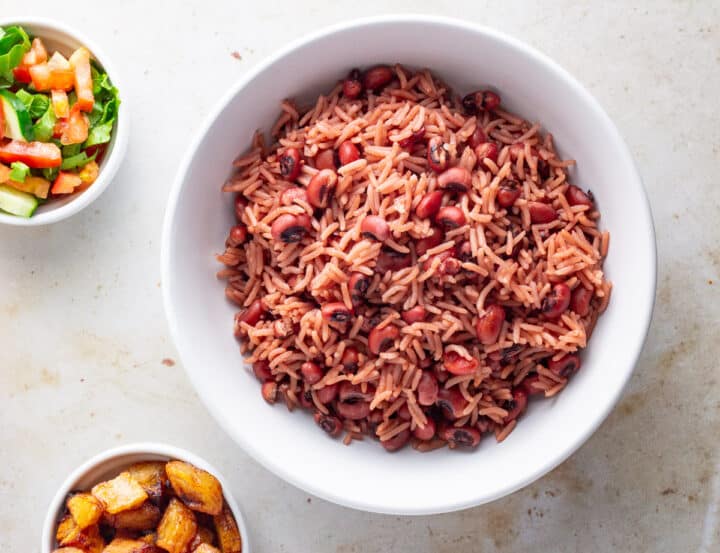
If you prefer your beans to more tender after 10 mins, close the pot and place back on the hob for a few more mins. 3 mins is adequate at a time.
These sorghum bicolor sheath leaves are available in African and Asian stores in the UK and US. In Nigeria, it is sold by herb sellers (elewe omo) in most open markets.
Using pressure for waakye recipe helps to save time and money. If you have instapot, even better, as it not only fast, but it more convenient. If you don't have either of these pressure cookers, it shouldn't stop you from making this delicious Ghanaian food. You just need to cook the beans for longer.





